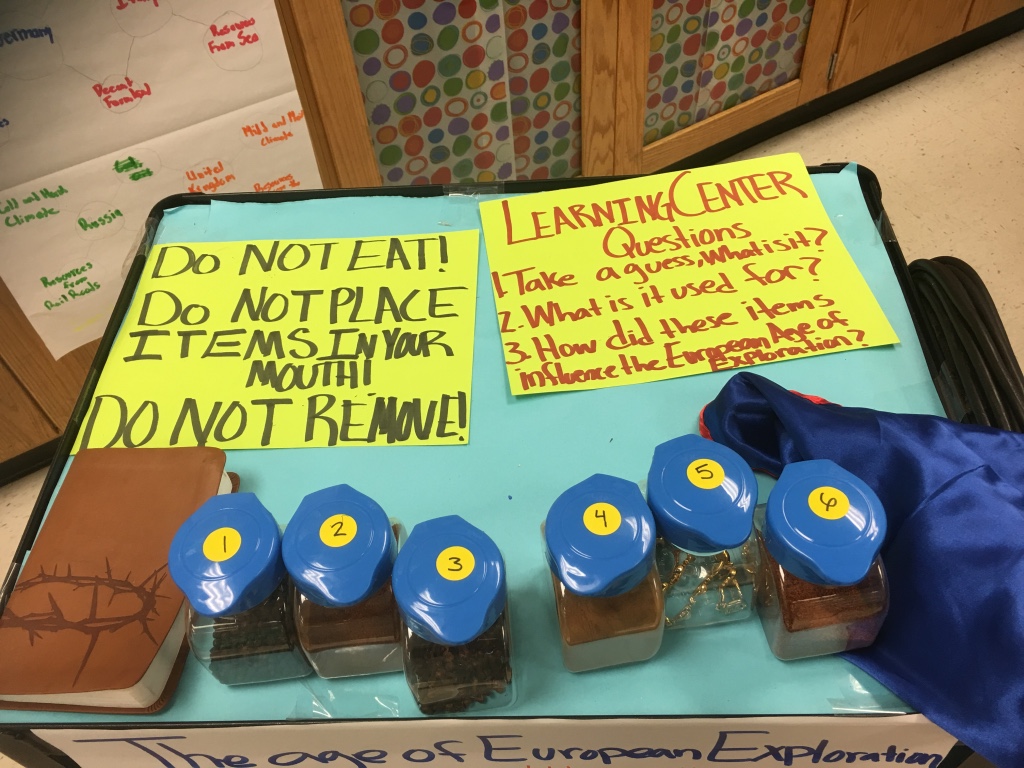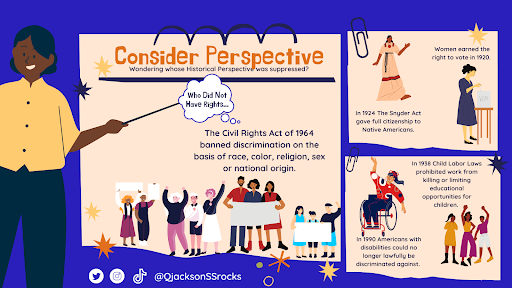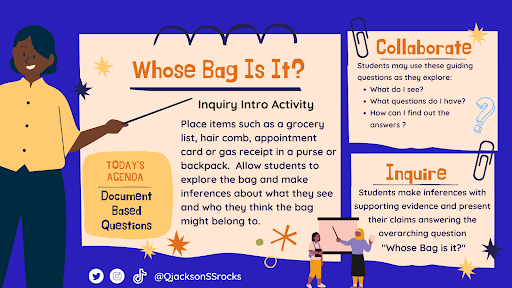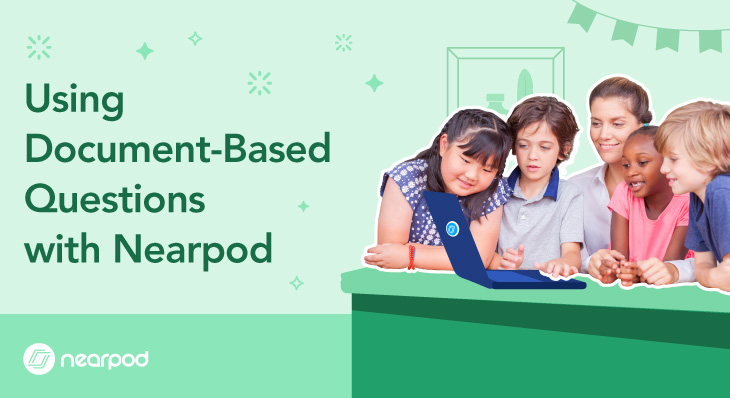
Using Document-Based Questions with Nearpod
In a Social Studies classroom, inquiry is one of the greatest forms of engagement. It accentuates the art of discovery and brings joy to learning. My first classroom adventure in inquiry was when I set up a document-based question activity for a class of 3rd graders.
I wrapped a box and placed a rock inside of it. For 30 minutes, students were to predict what was inside the box. Curiosity ignited the students so much, we ended up spending over an hour! I realized then that students learned best when they were able to ask questions, explore and solve. Ever since I’ve made sure my lesson plans include enough time for a document-based question process.
What is a Document-Based Question (DBQ)?
A document is anything that can be analyzed for meaning in the context of your standards–a picture, a cartoon, a digital lesson, a text, a video or even…a box with a rock!
- Document-Based Question is a question type that makes students analyze the source to answer. It involves exploring the context, perspective, freedom, norm, and ideology to determine meaning and purpose.
- In this inquiry-based process, students must explore sources to identify evidence in support or against a theory, question or idea.
Teaching was once about us as educators delivering facts, now more than ever, teaching is about students using the facts to explore, understand and innovate, the facts that students need to learn can not be found in a textbook or through a simple google search. Students need us to teach them how to analyze the facts, determine their reliability and identify evidence to help them learn and grow, students need us to be champions for the process of learning. This is why inquiry matters, inquiry creates an opportunity for every student sitting in the classroom to engage in the process, no one “knows the answer”. In the TED talk, ‘Every Child Deserves a Champion‘, Rita Pierson states that “no significant learning can take place without significant relationship”. Not only is this true of the connection between students and teachers but also of students and the content. The significant learning that our students need can only emerge through their interaction with the content that creates relevancy. Document-Based Questions make content more relevant by immersing them in that context. This ultimately leads to increased engagement, discourse, understanding and ultimately ownership of learning.
Tip: The Digital Public Library of America offers 44,369,376 images, texts, videos, and sounds from across the United States. Take any of these resources and Nearpodize the inquiry process. One of the benefits of incorporating primary sources is that they provide windows into the past and mirrors to understand how we impact the future.
Research-based document-based question resources
There are many ways to engage with a Document Based Question. The two methods I have found most effective in my classroom are: Stanford Steps and ORQ from The Library of Congress.
1. The Stanford Steps: The Stanford History Education Group offers this method through its Reading Like A Historian curriculum. The Stanford steps tasks students to explore a document students are tasked to Source, Close Read, Contextualize and Corroborate.
2. The Library of Congress: In this method, students follow the process of “Observe, Reflect, Question” as they analyze primary sources. It is very similar to what many teachers refer to as “I see. I think. I wonder?”
Explore more methods to incorporate inquiry in your classroom here.
3. Looking to get started now? Explore more methods to incorporate inquiry in your classroom here.
Integrating Document-Based Questions in your classroom
1. Identify your content
The first step in implementing a Document-Based Question is to identify the content you wish to cover. By doing that upfront, you can discuss topics that are most relevant to your class. Being proactive about your content also helps you to make real-life connections between historical occurrences and current events. We know that governance is the cornerstone of society, but how do we convey this understanding? In this world history lesson, students learn about the forms of democracy in Ancient Greece and compare them to the forms of government in modern western society. Students also enter a virtual field trip to examine Ancient Greek culture. These experiences help your content to live and breathe far beyond the classroom. Plus, an early selection of a rich resource will ensure that you make the best use of class time.
2. Explore diverse perspectives
When deciding upon documents, be sure that you have examined the source for context and bias. Be intentional about identifying sources that will support students in exploring marginalized voices in history. Nearpod offers an amazing resource through its Historical Perspectives and Literacy Content. The value of perspective is often lost within a textbook, however, with document-based questions we remove the barrier of black and white text and are free to explore history through various accounts, diary entries, census data and more. With Nearpod’s Historical perspectives and literacy series students are exposed to culturally-relevant primary and secondary resources that bring untold narratives into your social studies classrooms. can Be mindful of topics in history that have present-day implications since they may need to be addressed with more sensitivity. Be prepared to engage in appropriate discourse with your students. Perspective is critically important to change, I would often begin these conversations by having students identify whose voice is not present, these activities not only support students in understanding history through multiple lenses but can also be very powerful in helping them disavow stereotypes and missed understandings that often emerge when only one perspective of history is provided.
“We must reject not only the stereotypes that others hold of us, but also the stereotypes that we hold of ourselves.”
-Shirley Chisholm
3. Begin with a risk-free method
When you begin, try using activities where the risk is low. Since this learning involves independent cognitive labor, low risk will empower students to inquire and explore more confidently. They’ll also begin identifying what is required for success. Since it will be a journey, I suggest starting with a lightweight inquiry activity such as “Whose Bag is it?”
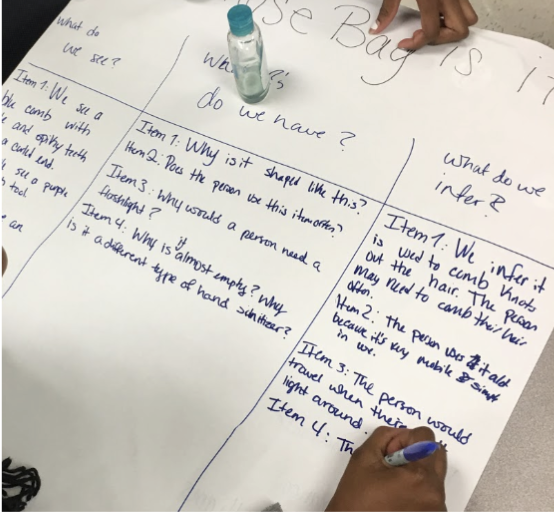
Using Nearpod for Document Based Questions
The National Council for Social Studies points out that “An understanding of civic ideals and practices is critical to full participation in society and is an essential component of education for citizenship, which is the central purpose of social studies”. Nearpod VR has proved to be an amazing resource to help young learners explore these ideals. One lesson I found to be quite impactful was a lesson for first-grade students on being a good citizen, we took a Nearpod VR of kids at a summer camp and supported students in analyzing the rules that might be in place, why those rules matter and how each student could contribute to the summer camp experience. As educators, we have learned to be increasingly creative and flexible to ensure that students continue to love learning and to provide them with relevant and tangible opportunities to explore and analyze what they learn in our classrooms.
Document-Based Questions require students to think critically about a concept and use several sources to frame an evidence-based opinion. To successfully engage in this process students will need opportunities to practice document analysis. Nearpod activities provide you with many options to support the inquiry process. One of my favorites is Draw-It. When students analyze a primary source that has been turned into a Draw It activity, they are able to annotate, take notes and make predictions right on the source. Collaborate boards are an extremely impactful tool to drive discourse among students and to track student thought progression, allowing students to reflect back on what they believed at the beginning of an activity and how their thoughts have progressed based on their evidence collection. Using Nearpod activities, I could put the source in front of every student and collect their inferences in real-time, creating space to address misconceptions, perhaps provide some additional guidance or see how my students use their thoughts and ideas to drive their own learning.
“Education must enable one to sift and weigh evidence, to discern the true from the false, the real from the unreal, and the facts from the fiction”.
–Martin Luther King Jr.
The point of document-based questions is to provide students with an authentic learning experience. We do not carry the burden of rote memorization, we are the bearers of exploration as a means to enlightenment and innovation.
Social Studies, in my opinion, is the most important subject, because without direction, governance, and empathy, society has no function. Through document-based questions, we equip students to ask questions, make judgments and explore.

My name is Quinae Jackson, I am in my 10th year in education. I am the East Coast Brand Ambassador for Nearpod. I’m passionate about sharing ways for teachers to maximize instructional technology and facilitate learning environments that promote discourse, and collaboration.
